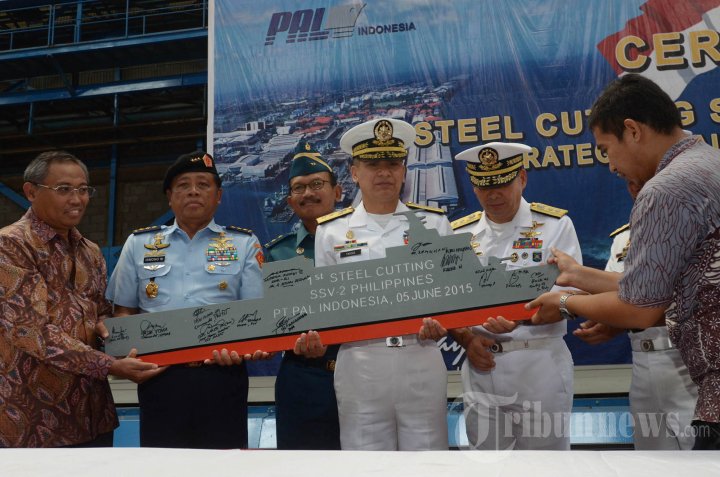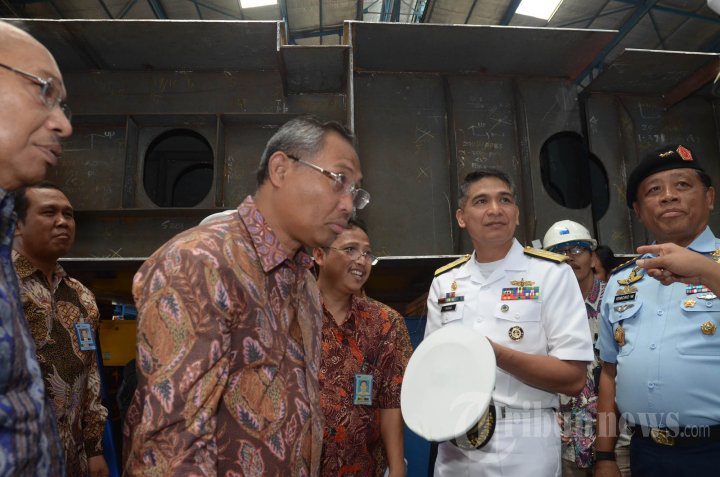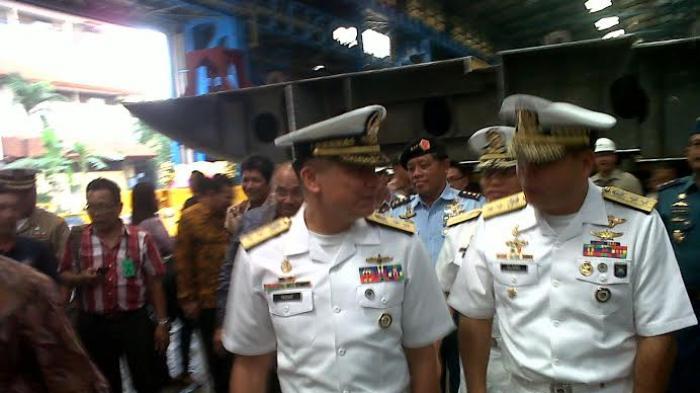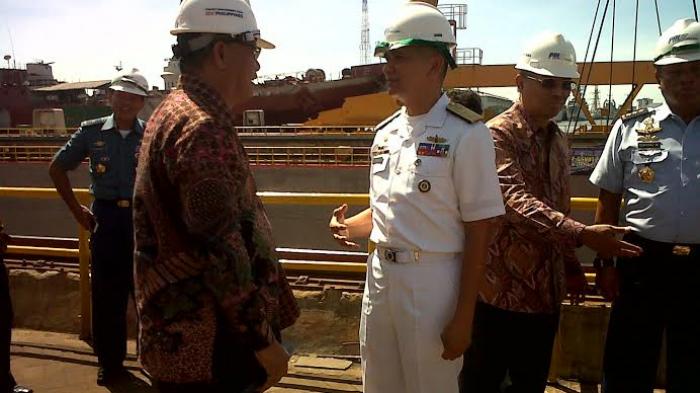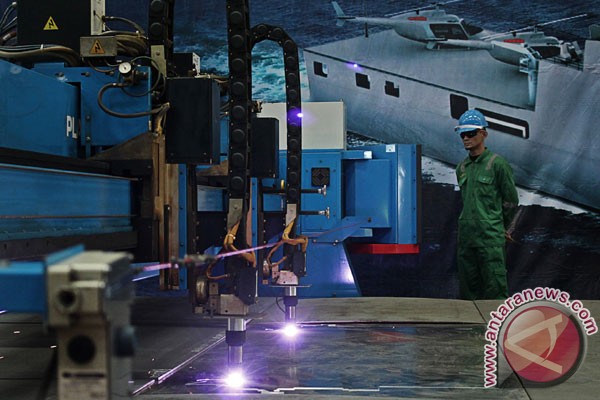Cossack25A1
SENIOR MEMBER

- Joined
- Jul 11, 2014
- Messages
- 2,566
- Reaction score
- 2
- Country
- Location
Politics and National Security News:
-----
The Geopolitical Stakes of the 2016 Philippine Elections
The outcome of next year’s presidential election will have significant implications for the country’s foreign policy.
By Jeffrey Ordaniel
May 28, 2015
For almost four years now, the Philippines has been Southeast Asia’s fastest growing major economy. Once dubbed the “sick man” of Asia, the country’s image has enjoyed a turnaround under President Benigno Aquino III. The Philippines sovereign credit rating has been upgraded from junk to investment grade by all major credit rating agencies. Though still lagging its peers in ASEAN, foreign direct investment and tourism figures have all seen remarkable upticks. Investments in human and economic infrastructure through public-private partnerships, overseas development assistance, and other schemes have been unprecedented under the current administration, despite bureaucratic and other delays.
Most significantly, though, Aquino’s foreign policy has made headlines around the world. Specifically, Manila has drawn closer to Washington. In April 2014, the two treaty-allies signed the Enhanced Defense Cooperation Agreement (EDCA), which will soon see American troops with their air and naval assets rotate through Philippine military bases, including Subic Bay and Palawan, both facing the contested South China Sea. The Philippines also filed a case against China through a UN-backed court to invalidate the infamous nine-dashed line map in the South China Sea, while simultaneously internationalizing the disputes, connecting them to wider international concerns such as freedom of navigation and access to global commons. The legal move is the boldest yet among ASEAN-claimant countries. Both the EDCA, an external balancing act, and the arbitration case, an appeal to the rule of law and for favorable global public opinion, represent Manila’s resolve in defending its sovereign claims and maritime entitlements in the South China Sea.
Meanwhile, the Philippines has embarked on a modest military modernization program that, if realized, will give its armed forces submarines and other assets required for the military’s envisioned “minimum credible defense” capabilities by 2020. Overall, Manila’s South China Sea policy under Aquino has been to internationalize, to legalize, and to balance China.
However, come May 2016, the country’s economic, security, and foreign policies will all enter a state of flux, as the Philippines gears up to hold its fifth presidential election since returning to democracy in 1986. The ruling Liberal Party has yet to decide on its presidential ticket for next year’s election, but Aquino has already indicated that Manuel “Mar” Roxas II, the current secretary of Interior and Local Government and a losing vice-presidential candidate in 2010, is his top choice for a successor. In an interview with the local media, the president said of Roxas, “He has demonstrated quite a wide range of expertise in so many different assignments. He is a valuable member of the Cabinet. He has been a staunch leader of the party… And he has demonstrated the ability to sacrifice, previously, for instance, when he gave way to me. So all of these traits should point out that he is – to my mind, as far as our coalition is concerned – at the top of the list.”
In fact, Roxas was supposed to run for president in 2010, when he was at his prime in terms of name recognition and popularity, but gave way to Aquino whose own mass appeal and corruption-free image were catapulted by the sudden death of his mother, democracy icon and former President Cory Aquino in 2009.
However, Roxas has not been performing well in recent opinion polls. Currently leading the pack is Vice President Jejomar Binay of the opposition party, United Nationalist Alliance. Binay’s populist platform, which focuses on social welfare programs for the poor, seems to be resonating. However, the vice-president is hounded by allegations of massive corruption during his long stint as mayor of the country’s financial district, Makati. The country’s Anti-Money Laundering Council (AMLC) was recently successful in urging the courts to freeze Binay’s bank accounts, and those of his immediate family members and alleged fronts. AMLC argued that the total of the bank accounts and transactions in question had reached 16 billion pesos (about $358 million) since 2008, amounts inconsistent with statutory declarations made. Since that revelation, Binay has seen his trust ratings plummet, although he still holds the lead in presidential polls.
Binay’s answer to these allegations is a blanket denial, dismissing them as politically motivated. Still, opinion polls in the coming months may move against him, especially as the case against the vice-president moves forward in court.
Because the Philippines has a weak, multi-party system, the ruling party is also reportedly eyeing neophyte Senator Grace Poe, an independent, as its alternative standard-bearer, if not as the vice-presidential partner of the less popular Roxas. Grace is the daughter of Fernando Poe, the losing opponent of former President Gloria Macapagal-Arroyo in the 2004 election, an election Arroyo critics say was largely rigged. Should the ruling party play it safe, Poe will be its presidential candidate. Should she win, she will be the third woman to rule the Philippines.
Diplomatic Implications
These domestic political dynamics in the Philippines could prove to be very consequential in Manila’s diplomacy in the years ahead. Already, Binay has indicated that he would have a different China policy than the one pursued by Aquino. Local media quoted him recently as saying, “we have to accept the fact that China has all the capital and we have the property over there, so why don’t we try to develop that property as a joint venture?” China has long called for joint development in the South China Sea, but other claimant-states’ unease with Beijing’s premise of “indisputable sovereignty” has prevented any progress on the idea.
Apparently, Binay has also not been briefed on why a joint venture with China on equal terms would be a violation of the country’s constitution, the document he would have to vow to defend should he be elected president. But some in the Philippine Left – who have always been against an American presence in the country – have already expressed support for Binay, among them University of the Philippines Professor Harry Roque, who has asked the country’s Supreme Court to block the implementation of EDCA and declare the U.S.-Philippine deal unconstitutional.
Already, Binay’s stated China doctrine has drawn criticism from the West. Scholar Malcolm Cook wrote, “If Binay wins and follows through on these views, it would be a return to the policy preferred by Aquino’s predecessor, President Macapagal-Arroyo… The foreshadowing of a second reversal of Philippines policy on its maritime boundary dispute with China in two presidential terms shows how divided the Philippine political elite and their financial backers are on this issue and its place in Philippines-China relations. A second reversal in two presidential terms would rightfully reinforce views within ASEAN, and in Washington and Tokyo, about the unreliability of the flip-flopping Philippines, and would throw into doubt the wisdom of aligning their South China Sea approaches with the policy prevailing in Manila at any given moment.” It goes without saying that a Binay win would give China reason to celebrate.
If the Liberal Party’s candidate wins, either Roxas or Poe, a continuity of policy, for at least six more years, is likely. It would signal consistency in the Philippines’ relations with the U.S., which has recently stepped up its South China Sea engagements in a bid to delegitimize China’s land reclamation in disputed areas. It would also be good news for Japan, which has been calling for greater rule of law in East Asia, a call echoed by Aquino’s decision to pursue a court case against Beijing. As the standard-bearer of the ruling party, Roxas is expected to largely continue Aquino’s foreign policy direction.
It is also worth noting that Poe formerly held both Filipino and American citizenship. She renounced her dual-citizenship and reverted back to being a “natural-born Filipino” before serving the Aquino Government in 2010. Hence, an anti-American foreign policy would be least expected from a Poe presidency. Overall, a consensus in the ruling party is slowly forming and its members seem to be zeroing in on a Roxas-Poe or Poe-Roxas presidential ticket to take on the populist Binay.
In May 2016, both Washington and Beijing will have something at stake in an election that will very likely demonstrate the interplay of a country’s domestic politics and its foreign policy choices.
Jeffrey Ordaniel is a PhD Candidate at the Security and International Studies Program of the National Graduate Institute for Policy Studies, Tokyo.
-----
The Geopolitical Stakes of the 2016 Philippine Elections | The Diplomat
-----
-----
The Geopolitical Stakes of the 2016 Philippine Elections
The outcome of next year’s presidential election will have significant implications for the country’s foreign policy.
By Jeffrey Ordaniel
May 28, 2015
For almost four years now, the Philippines has been Southeast Asia’s fastest growing major economy. Once dubbed the “sick man” of Asia, the country’s image has enjoyed a turnaround under President Benigno Aquino III. The Philippines sovereign credit rating has been upgraded from junk to investment grade by all major credit rating agencies. Though still lagging its peers in ASEAN, foreign direct investment and tourism figures have all seen remarkable upticks. Investments in human and economic infrastructure through public-private partnerships, overseas development assistance, and other schemes have been unprecedented under the current administration, despite bureaucratic and other delays.
Most significantly, though, Aquino’s foreign policy has made headlines around the world. Specifically, Manila has drawn closer to Washington. In April 2014, the two treaty-allies signed the Enhanced Defense Cooperation Agreement (EDCA), which will soon see American troops with their air and naval assets rotate through Philippine military bases, including Subic Bay and Palawan, both facing the contested South China Sea. The Philippines also filed a case against China through a UN-backed court to invalidate the infamous nine-dashed line map in the South China Sea, while simultaneously internationalizing the disputes, connecting them to wider international concerns such as freedom of navigation and access to global commons. The legal move is the boldest yet among ASEAN-claimant countries. Both the EDCA, an external balancing act, and the arbitration case, an appeal to the rule of law and for favorable global public opinion, represent Manila’s resolve in defending its sovereign claims and maritime entitlements in the South China Sea.
Meanwhile, the Philippines has embarked on a modest military modernization program that, if realized, will give its armed forces submarines and other assets required for the military’s envisioned “minimum credible defense” capabilities by 2020. Overall, Manila’s South China Sea policy under Aquino has been to internationalize, to legalize, and to balance China.
However, come May 2016, the country’s economic, security, and foreign policies will all enter a state of flux, as the Philippines gears up to hold its fifth presidential election since returning to democracy in 1986. The ruling Liberal Party has yet to decide on its presidential ticket for next year’s election, but Aquino has already indicated that Manuel “Mar” Roxas II, the current secretary of Interior and Local Government and a losing vice-presidential candidate in 2010, is his top choice for a successor. In an interview with the local media, the president said of Roxas, “He has demonstrated quite a wide range of expertise in so many different assignments. He is a valuable member of the Cabinet. He has been a staunch leader of the party… And he has demonstrated the ability to sacrifice, previously, for instance, when he gave way to me. So all of these traits should point out that he is – to my mind, as far as our coalition is concerned – at the top of the list.”
In fact, Roxas was supposed to run for president in 2010, when he was at his prime in terms of name recognition and popularity, but gave way to Aquino whose own mass appeal and corruption-free image were catapulted by the sudden death of his mother, democracy icon and former President Cory Aquino in 2009.
However, Roxas has not been performing well in recent opinion polls. Currently leading the pack is Vice President Jejomar Binay of the opposition party, United Nationalist Alliance. Binay’s populist platform, which focuses on social welfare programs for the poor, seems to be resonating. However, the vice-president is hounded by allegations of massive corruption during his long stint as mayor of the country’s financial district, Makati. The country’s Anti-Money Laundering Council (AMLC) was recently successful in urging the courts to freeze Binay’s bank accounts, and those of his immediate family members and alleged fronts. AMLC argued that the total of the bank accounts and transactions in question had reached 16 billion pesos (about $358 million) since 2008, amounts inconsistent with statutory declarations made. Since that revelation, Binay has seen his trust ratings plummet, although he still holds the lead in presidential polls.
Binay’s answer to these allegations is a blanket denial, dismissing them as politically motivated. Still, opinion polls in the coming months may move against him, especially as the case against the vice-president moves forward in court.
Because the Philippines has a weak, multi-party system, the ruling party is also reportedly eyeing neophyte Senator Grace Poe, an independent, as its alternative standard-bearer, if not as the vice-presidential partner of the less popular Roxas. Grace is the daughter of Fernando Poe, the losing opponent of former President Gloria Macapagal-Arroyo in the 2004 election, an election Arroyo critics say was largely rigged. Should the ruling party play it safe, Poe will be its presidential candidate. Should she win, she will be the third woman to rule the Philippines.
Diplomatic Implications
These domestic political dynamics in the Philippines could prove to be very consequential in Manila’s diplomacy in the years ahead. Already, Binay has indicated that he would have a different China policy than the one pursued by Aquino. Local media quoted him recently as saying, “we have to accept the fact that China has all the capital and we have the property over there, so why don’t we try to develop that property as a joint venture?” China has long called for joint development in the South China Sea, but other claimant-states’ unease with Beijing’s premise of “indisputable sovereignty” has prevented any progress on the idea.
Apparently, Binay has also not been briefed on why a joint venture with China on equal terms would be a violation of the country’s constitution, the document he would have to vow to defend should he be elected president. But some in the Philippine Left – who have always been against an American presence in the country – have already expressed support for Binay, among them University of the Philippines Professor Harry Roque, who has asked the country’s Supreme Court to block the implementation of EDCA and declare the U.S.-Philippine deal unconstitutional.
Already, Binay’s stated China doctrine has drawn criticism from the West. Scholar Malcolm Cook wrote, “If Binay wins and follows through on these views, it would be a return to the policy preferred by Aquino’s predecessor, President Macapagal-Arroyo… The foreshadowing of a second reversal of Philippines policy on its maritime boundary dispute with China in two presidential terms shows how divided the Philippine political elite and their financial backers are on this issue and its place in Philippines-China relations. A second reversal in two presidential terms would rightfully reinforce views within ASEAN, and in Washington and Tokyo, about the unreliability of the flip-flopping Philippines, and would throw into doubt the wisdom of aligning their South China Sea approaches with the policy prevailing in Manila at any given moment.” It goes without saying that a Binay win would give China reason to celebrate.
If the Liberal Party’s candidate wins, either Roxas or Poe, a continuity of policy, for at least six more years, is likely. It would signal consistency in the Philippines’ relations with the U.S., which has recently stepped up its South China Sea engagements in a bid to delegitimize China’s land reclamation in disputed areas. It would also be good news for Japan, which has been calling for greater rule of law in East Asia, a call echoed by Aquino’s decision to pursue a court case against Beijing. As the standard-bearer of the ruling party, Roxas is expected to largely continue Aquino’s foreign policy direction.
It is also worth noting that Poe formerly held both Filipino and American citizenship. She renounced her dual-citizenship and reverted back to being a “natural-born Filipino” before serving the Aquino Government in 2010. Hence, an anti-American foreign policy would be least expected from a Poe presidency. Overall, a consensus in the ruling party is slowly forming and its members seem to be zeroing in on a Roxas-Poe or Poe-Roxas presidential ticket to take on the populist Binay.
In May 2016, both Washington and Beijing will have something at stake in an election that will very likely demonstrate the interplay of a country’s domestic politics and its foreign policy choices.
Jeffrey Ordaniel is a PhD Candidate at the Security and International Studies Program of the National Graduate Institute for Policy Studies, Tokyo.
-----
The Geopolitical Stakes of the 2016 Philippine Elections | The Diplomat
-----


